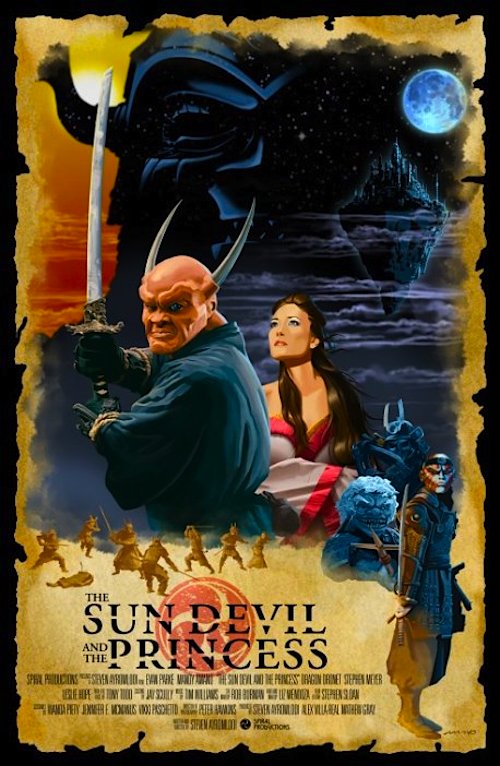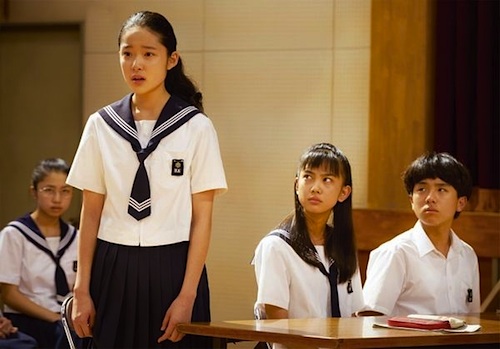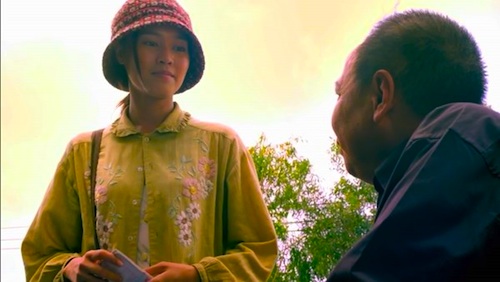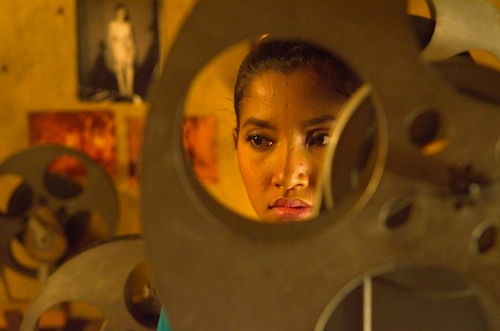By Joe Bendel. Linh is like a Vietnamese Zatoichi, except she doesn’t even use a sword. She can make do with her cane or any staff-like object that comes to hand. She is looking for the man who stole her eyes, but she is already too enlightened for revenge. However, the ruthless One-Eyed Cuong is a different story. A showdown is therefore inevitable in Luu Huynh’s Lost Eyes, which screens during the 2015 edition of New Vietnamese Cinema at the Honolulu Museum of Art.
Linh was born with supernaturally intense blue eyes. Unfortunately, Cuong, a low level thug and general underworld whipping boy, receives magical instructions from a crooked priest allowing him to steal their power to fuel his own ambitions. Even though he sort of botches the job, he still gets enough juice from the ritual to become the top kingpin. Tragically, he kills both of Linh’s parents in the process, but a convent takes in the young peasant girl, where she duly receives instruction in martial arts.
Through her own clairvoyant rituals, Linh’s teacher discovers her mother’s spirit now resides in Cuong’s heart, where she lays massive guilt trips on the savage gangster. If Linh successfully faces the man who stole her eyes, she will see her mother once again. So she does not blow into town for the sake of retribution. However, if she just so happens to get some payback as part of her loftier goal then so be it.
Lost Eyes is a throwback in the best way possible. It is mostly about gritty, grungy street-fighting, but it layers some spiritual seasoning on top, just the way we like it. Frankly, this is the sort of film that built Golden Harvest back in the day and it still works for contemporary audiences.
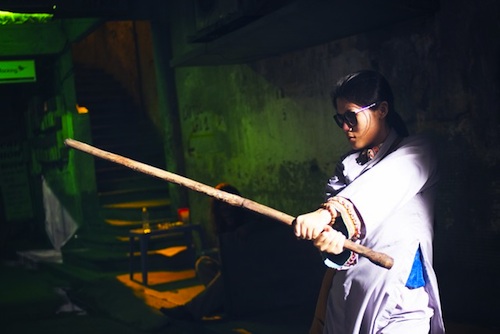
As Linh, Ngoc Thanh Tâm shows instant star power and profound action cred. Likewise, Binh Minh chews enough scenery to be a worthy nemesis as Cuong. Thúy Vinh (still striking looking, despite the film’s de-glamouring) nicely handles the mystical business as Linh’s priestess-guru. There are also plenty of talented stunt performers, who will get thoroughly smacked around by Linh and Cuong.
This is not a complicated narrative, but the fight scenes are pleasingly down-to-earth and super-charged, in an old school kind of way. Both Ngoc and her character wear well on viewers as the film progresses, making a potential franchise an appealing prospect. Frankly, it is just refreshing to see a new film that is so honest to the martial arts genre tradition, yet still manages to establish its own identity. Highly recommended for action fans, Lost Eyes screened this past Tuesday (7/7), as part of New Vietnamese Cinema 2015 at the Honolulu Art Museum. Anyone planning a trip to Hawaii in the near future should make a point of checking out their film program, in addition to the beaches and volcanoes.
LFM GRADE: A-
Posted on July 9th, 2015 at 11:34pm.

